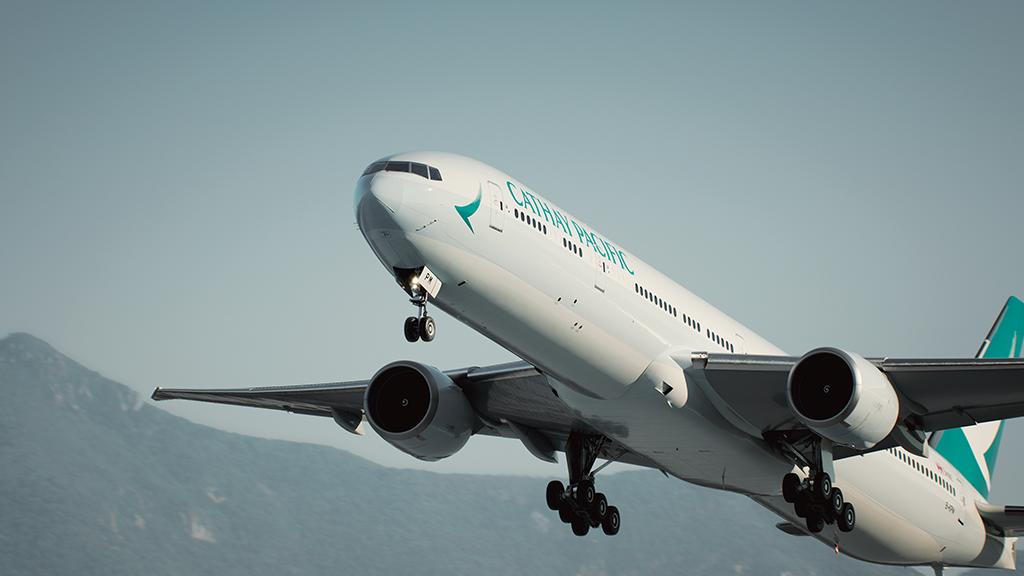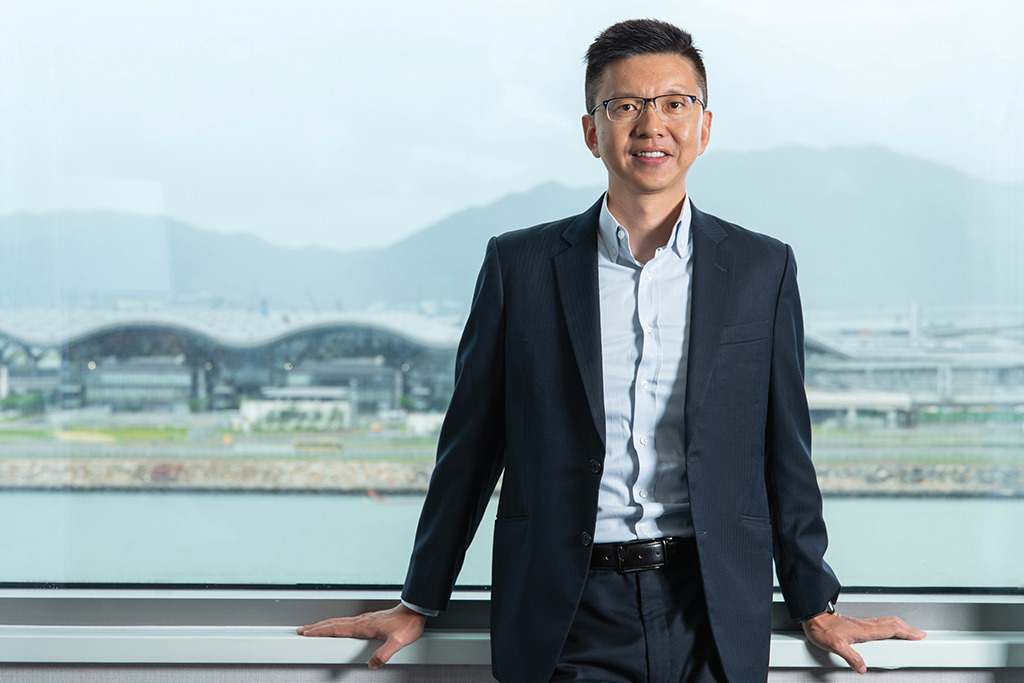
For many airlines around the world, 2019 was a historically good year operationally and financially, making the plunge into the pandemic in 2020 even more shocking. For Cathay Pacific Airways, however, 2019 was the pivotal year.
In early 2019, the carrier was emerging from a transformation strategy under CEO Rupert Hogg following two years of financial losses. In February, the company issued a profit alert to the Hong Kong Stock Exchange indicating an expected HK$2.3 billion ($300 million) profit for the 2018 financial year and a turnaround in company fortunes as it became more agile, opened new routes and improved customer service.
But in March, massive civil rights protests broke out across the city, with protestors at one stage entering Hong Kong International Airport, Cathay’s home hub, and disrupting flight operations. Some Cathay employees expressed their support for the protestors, to the displeasure of the Beijing government. Asked about the situation at a press conference, then-Cathay chairman John Slosar said he “wouldn’t dream” of telling the 27,000 staff at Cathay “what to think.” He was summoned to Beijing and resigned in September. Between August and November, Hogg and CCO Paul Loo also resigned.

As the external political and internal management turmoil continued through that year, Augustus Tang was appointed CEO, Ronald Lam was promoted to CCO and Patrick Healy took up the position of chair in November. By the end of 2019, just when it looked like things were settling and Cathay could once more rebuild, news headlines started to focus on a virus having a catastrophic impact in the Chinese city of Wuhan.
Fast forward to January of this year, the other side of the pandemic, and Tang moved to a different role at Cathay parent company Swire while Lam was again promoted, this time to CEO.
In an interview with ATW at Cathay’s headquarters, Lam acknowledged the trauma of the previous few years and outlined his company’s vision.
“I just feel after the past few years, in particular, I think we’ve gone through a lot, and we have transformed a lot. So we are in a new journey that will have every chance in the coming years to see success on a level we have not seen before,” he said.
“Our vision is to be one of the world’s greatest service brands, and that means a brand that our customers, our people and Hong Kong can be truly proud of. There’s a lot of work we need to do to achieve that vision.”
Lam has ambitious plans to revive what he calls “the new Cathay Pacific.” These are built on four key pillars: the flagship’s premium travel offerings and products; LCC subsidiary HK Express; air cargo that has been rebranded as Cathay Cargo; and the lifestyle segment, which has integrated two loyalty products—Marco Polo and Asia Miles—and seen the launch of lifestyle services.
Each of the four segments will have its own director and individual P&L sheets. Lam said doing so gives the team greater empowerment and clearer accountability, resulting in greater agility and innovation speed to meet future market requirements.
With the vision set out, Lam said the company’s leaders must have metrics on what it means qualitatively as well as quantitatively, by setting key performance indicators that cascade across the airline.
“Clear and sound strategy and clear vision are the two things that I think I will focus on, while day-to-day execution will be pretty much left to my senior team members because they are accountable,” Lam said.
The lifestyle product was a focus for Lam when he was CCO. Traditionally, customers would have just a single large spending and interaction when traveling, which Lam describe as “one large dot.” With the launch of new loyalty program and credit card, he hopes to have more “smaller dots” that are closely spaced together before every large dot. The aim is to increase the interaction between a customer and the airline.
Communicating
Since January, Lam has been very active in communications, online and offline, saying that he represents the brand externally, and the culture internally. He believes there should be a change in the way leaders and the airline communicate with both their staff and their customers.
“I believe that for Cathay to be successful as a group in the next few years, we need to continuously improve our substance. But we also need to do a better job in storytelling,” he said. “If I look at the past decade, I think when we face difficulty, sometimes it’s a substance issue. But other times could be a storytelling issue. There’s a lot of work we need to build on both.”
Lam published some travel blogs for the company while on a high-level delegation with the Hong Kong government to the Middle East, which received good feedback for their authenticity and casualness. He continues to experiment with more communications media, including appearing and addressing staff and the public on videos.
In 2021, the oneworld airline created the Cathay Agile initiative in which staff from various departments get together to “cross-pollinate” ideas and solve challenges, which are prioritized by the management every two weeks. It’s an initiative that Lam strongly supports.
“A lot of the new-generation workforce likes to work in such an environment where they can really innovate and make a difference. And they want to be part of something to which they can contribute directly,” he said, adding that Cathay’s younger management team—and Lam himself is CEO at just 50 years old—is an outcome of high-performing staff, not an objective of the airline.
He also said that the top executive team, consisting of 14 people, will see an equal gender split, which again is an outcome of giving everyone equal opportunities based on merit. Top female leaders in Cathay include CCO Lavinia Lau and HK Express CEO Jeanette Mao.
Looking ahead, Lam has set his sights on Hong Kong’s Greater Bay Area (GBA) as one of three key drivers for success, alongside digitalization and sustainability. The GBA covers nine major cities in the Guangdong province region with a population of around 80 million with average age in the 30-33-year range.
China and the GBA
Cathay has also stepped up customer interactions within the China mainland, setting up accounts with Chinese-centric applications such as WeChat and DouYin. Because of slot limitations, Cathay is only flying 2X-daily to Guangzhou airport, but the airline is looking to capitalize on the new and improved land and sea links. The airline will open a lounge at Shenzhen Shekou Ferry Terminal for passengers taking the ferry to Hong Kong airport for a Cathay flight.
The GBA is also important to a long-time Cathay strength: cargo.
“I can’t complete the GBA conversation without talking about cargo. GBA is the world’s most important manufacturing base, and they are moving to high-end, high-quality manufacturing. This fits our cafe cargo proposition very well because we are also positioning ourselves as a high-quality differentiated air cargo carrier,” Lam said.
“We are looking at how to facilitate and streamline cargo flow between the nice cities in Greater Bay Area into Hong Kong. How? With more innovation in infrastructure and digital capability.”
Signs of the new senior management team’s vision having an effect could be seen in the company’s 2022 annual results, posted in March. While the company’s airlines and subsidiaries posted a small loss of HK$255 million for the year, the second half saw a marked improvement over the first half with an attributable profit of HK$2.3 billion (the overall group, including associate businesses, posted a reported an attributable loss of HK$6.5 billion.)
Healy noted in the results statement that the company had “a crystal-clear strategy that we are confident will deliver long-term success. To achieve this, we are focused on reconnecting. This means reconnecting Cathay Pacific with Hong Kong, the GBA and the Chinese mainland, as well as reconnecting Hong Kong with the world.”
